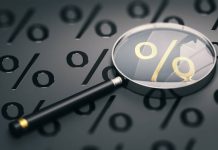Sentiment indicators in the Eurozone are quite strong at present. The manufacturing PMI in the euro area rose to a multi-year high in May, and the Ifo index of German business sentiment stands at its highest level since reunification. That said, the actual state of the Eurozone economy does not appear to be as strong at present as the sentiment indicators would suggest. However, the expansion is becoming increasingly self-sustaining. Accordingly, we look for real GDP in the Eurozone to accelerate modestly in coming quarters.
Data released this week showed that business confidence in the Eurozone continues to strengthen. The manufacturing PMI in the Eurozone rose to 57.0 in May, its highest reading in six years (Figure 1). The comparable index for the service sector edged down a bit in May, but it remains at an elevated level. Taken at face value, the strength of the PMIs suggests that the Eurozone economy is booming at present. Business sentiment in Germany, the single largest economy in the euro area, also is robust at present. The Ifo index of German business sentiment rose in May to its highest level since German reunification occurred in 1991 (Figure 2). Likewise, a widely followed index of consumer confidence in Germany edged up to its highest level in at least 12 years.


That said, there seems to be some disconnect at present between the strength in sentiment indicators and actual growth in economic activity. In Germany, industrial production (IP) was up only 1.1 percent on a year-ago basis in the first quarter of the year. With the Ifo index at its highest level in at least 26 years, it would be reasonable to expect that growth in German IP would be significantly stronger at present than just 1 percent. Perhaps IP growth in Germany will strengthen in coming months. In that regard, the volume of manufacturing orders, which was up 2.3 percent in Q1, does point to some acceleration in production going forward.
Although the actual state of economic growth in the euro area at present may be a bit disappointing in light of the strength in sentiment indicators, there are signs that the expansion is becoming increasing self-sustaining. Data released this week showed that real GDP in Germany grew at an annualized rate of 2.4 percent on a sequential basis in the first quarter, which confirmed the preliminary estimate that was released a few weeks ago (Figure 3). But the new details on the spending components that were available this week showed that domestic demand was an important driver of real GDP growth in Germany in Q1. Although real personal consumption expenditures grew only 1.2 percent in Q1, growth in investment spending was quite strong. Business spending on machinery equipment rose 5.0 percent while construction spending shot up 9.5 percent.

The Spanish economy tanked during the global financial crisis and its immediate aftermath – real GDP contracted nearly 10 percent between 2008 and 2013 – but growth has been quite strong in recent years. Real GDP in Spain grew 3.2 percent in both 2015 and 2016, an annualized pace of growth that was maintained in Q1-2017 (Figure 4). The data on GDP spending components in the first quarter that were released this week showed that domestic demand remains the primary driver of economic growth in Spain.













